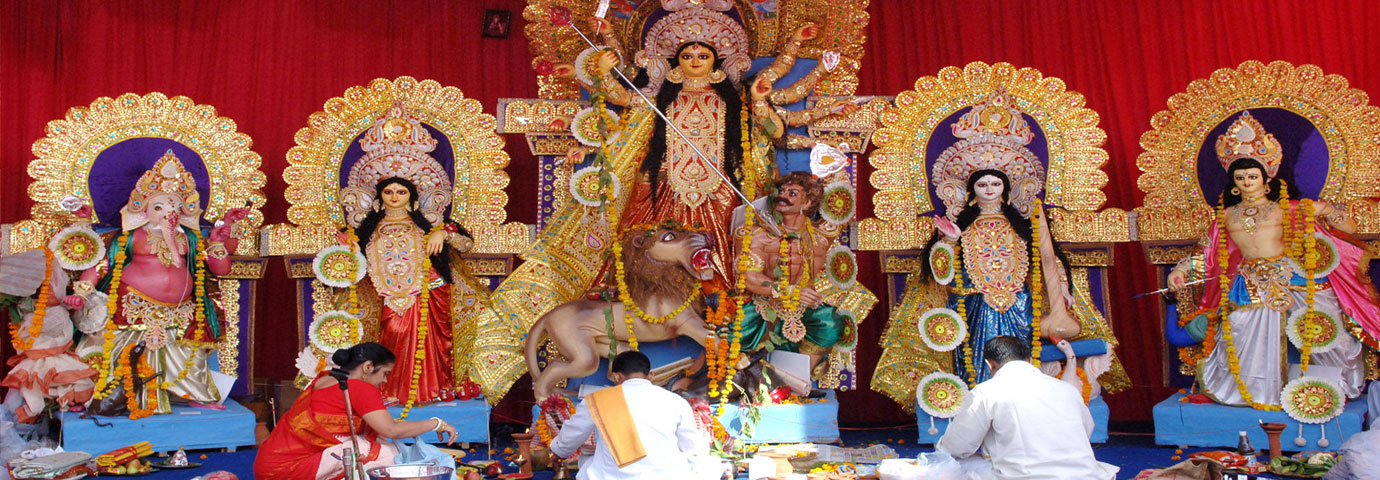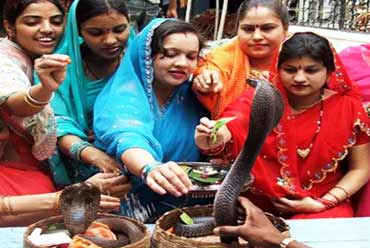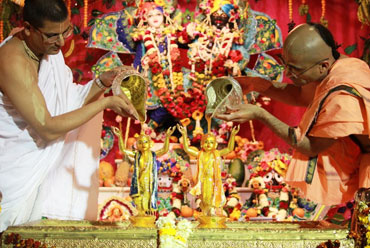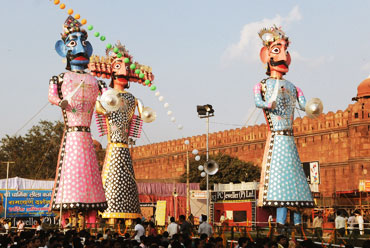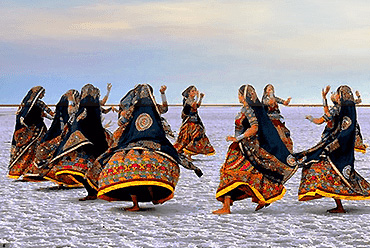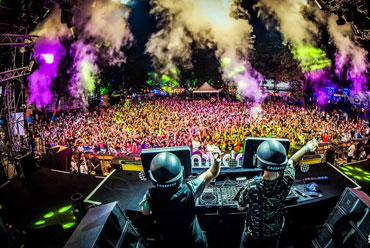Durga puja is the favorite festival of the people of eastern India, especially the people of West Bengal. This festival is celebrated all over India, though with differing rituals, for nine days. It is also called Navratri in some parts of the country.
Time Of The Year
Durga puja is celebrated in the autumn months of September/October. According to the Hindu solar calendar, it falls on the first nine days of the month of Ashvin. It is the time of the year when the weather is at its moderate best giving the air a festive touch.
Celebrations
It is the time of the Durga Puja, celebrating the ten-armed goddess of fertility and the third embodiment of the Devi, Durga. It was Durga who vanquished the buffalo-demon Mahishasura.
The festivities start with the first day called Mahalaya. It is also the day of the beginning of the countdown to the Durga Puja, which is celebrated in most households apart from the gaily-decorated puja mandaps that are erected in almost every locality. It is a common belief that Ma Lakshmi brings peace and prosperity to the households that celebrate the puja. People strongly believe that if Ma Lakshmi becomes chanchala or unhappy with a certain household, she tries to leave the place, leaving the owner of the house in a financial mess.
Rituals
Mahalaya precedes Durga Puja when all the members of the family remember their ancestors. This ritual is called Tarpan. Various shlokas are chanted early in the morning in almost every home as well as in the puja mandaps. The week that follows the Mahalaya is called Debi-pokhsha. The puja actually starts on the day of saptami or the seventh day and goes on till dashami or the tenth day. All mothers keep a fast on sashthi, the day preceding saptami, to pray for the well being of their children. The eighth day or ashtami is a day for vegetarian diet. Sandhi-pujo is also held on that day. Finally, the day of navami arrives which is the last night for the Mother Goddess to stay in her father's home. The next day, the day of dashami, she goes back to her husband's house. People bid a tearful farewell to her and present great barans with candles, fruits and garments.
Legends
There are various legends related to Durga Puja. It is believed that in the ancient times, a demon called Mahishasura earned the favor of Lord Shiva after long meditation and prayers. Shiva, pleased with the devotion of the demon, blessed him with a boon that no man or God would be able to kill him. Empowered with the boon, Mahishasura started killing people mercilessly and even drove the Gods out from heaven. The Gods then told Shiva about the atrocities of the demon. Angered by this, Shiva opened his third eye and concentrated the energy coming out of it to form a woman. All the Gods who were present there contributed their share of energy to this Goddess and thus Durga was born. Riding a lion, she attacked Mahishasura and beheaded him. Ironically perhaps, Mahishasura may have founded the Durga Puja when upon learning of his impending demise at the hands of the goddess he, as his last wish, asked the goddess that he too might be worshipped along with her. The goddess granted his wish and since then, the demon is always seen at her feet in three of her forms.
According to a Bengali belief, Daksha, the king of the Himalayas, and his wife Menoka, had a daughter called Uma. Right from her childhood, Uma, started worshipping Lord Shiva as her would be husband. Lord Shiva, pleased with her worship, came to marry her. Daksha did not like this tiger-skin clad groom with ash & dirt spread all over his body. Uma got married to Lord Shiva but was prevented by her father from going to her husband's abode in Mount Kailash. Daksha later organized a yagna where all the Gods were invited except Lord Shiva. Uma, feeling ashamed of the behavior of her father went on fast and finally died. When Lord Shiva came to know of this, he went to Daksha's house, lifted Uma's body on his shoulders and start the dance of destruction called tandav. Due to this dance, the world was on the verge of destruction when Narayana or Lord Vishnu intervened. He used his chakra so that parts of Uma's body fell of the dancing Shiva's shoulder. Shiva was finally pacified when the last piece fell off from his shoulder. Narayana revived Uma and requested Shiva to forgive Daksha. Ever since peace was restored, it is believed that Uma, with her four children, Ganesh, Kartik, Saraswati and Lakshmi and her two sakhis, Jaya and Bijaya, comes to visit her parent's home each year during the season of sharat or autumn when Durga Puja is celebrated.
Another legend has it that Lord Rama went to rescue his abducted wife Sita from the grip of Ravana, the king of the demons in Lanka. Before starting for his battle with Ravana, Rama wanted the blessings of Devi Durga. He came to know that the Goddess would be pleased only if she was offered one hundred neelkamal or blue lotuses. Rama, after traveling the whole world, could gather only ninety-nine. He finally decided to offer one of his eyes, which resembled blue lotuses. Pleased with Rama's devotion, Durga appeared before him and blessed him. The battle started on the saptami and Ravana was finally killed on the sandhikshan i.e. the crossover period between ashtami and navami and was cremated on dashami. Since the period of this worship was different from the conventional festival time of spring or basant, this puja is also known as akal-bodhan or worship (bodhan) in an unconventional time (a-kaal).
Regional Celebrations
Almost all the regions of India celebrate this festival with great enthusiasm. Durga Puja as such, is celebrated with special festivities in the eastern part of India, especially in the state of West Bengal. Though the rituals and festivities are different, almost all parts of India celebrate these nine days with devotion and zeal. In north India, it is characterized by fasts and solemnity, in western India, it is marked by gaiety and the traditional dandiya and garba dances, and in the south, pujas are offered separately for three days to each of the three goddesses, Durga, Saraswati and Lakshmi. In the east, the most attractive part of the celebrations is the puja mandaps, which are brightly colored, gaily decorated and bursting at seams with devotees assembled to worship the goddess.
Places To Visit
The best-recommended place to visit during this festival would be Calcutta, the capital of West Bengal. Moreover one can visit the other states of the east like Assam as everywhere Durga Puja is celebrated with great festivity.

